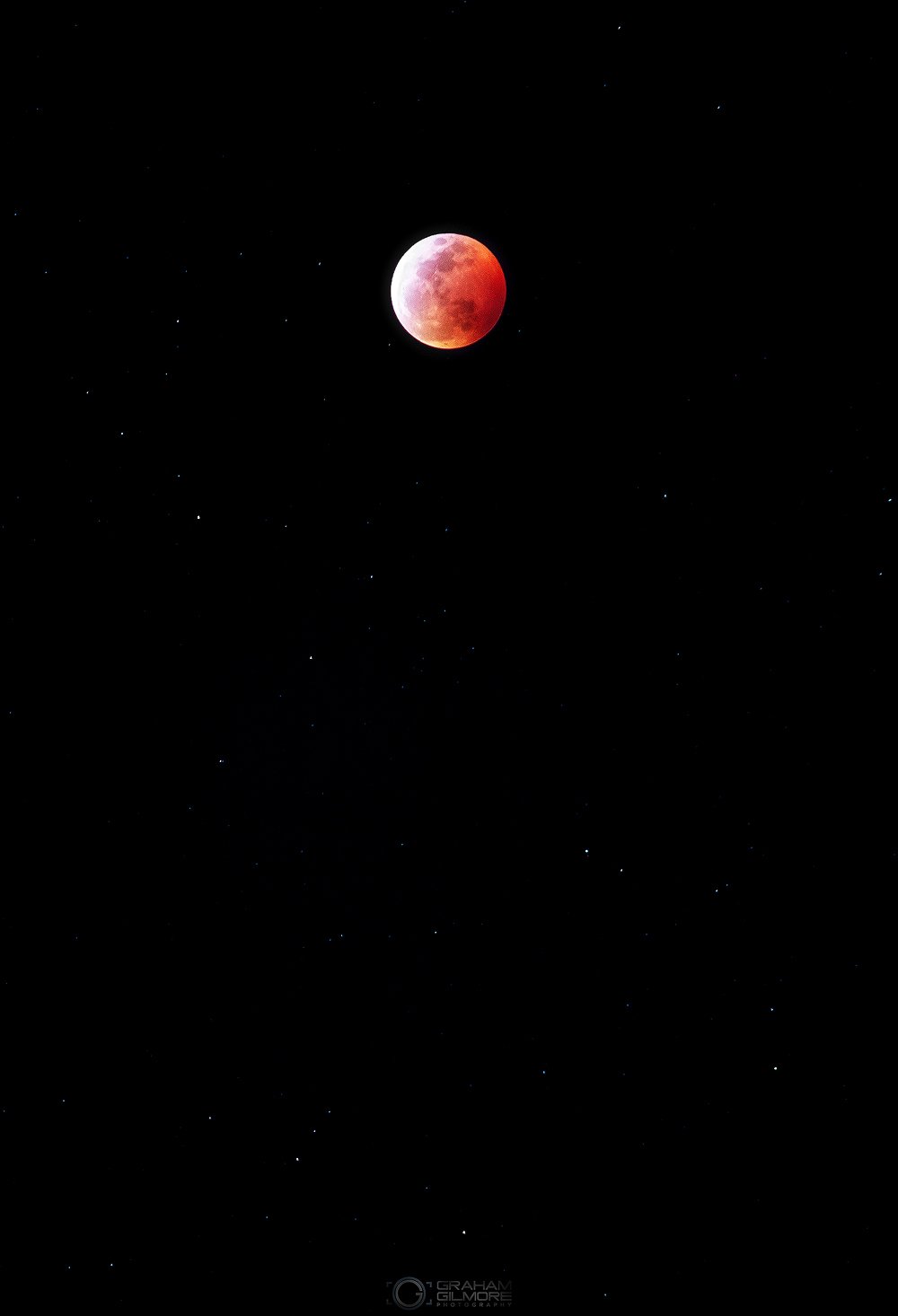Blood Moon January 2019
Photo of the Blood Moon with some stars. Taken one cold evening on January 20th 2019 from Kenneth Hahn State Park in Los Angeles. Canon 5dmkIII | 70-200mm f2.8L. During a total lunar eclipse, Earth completely blocks direct sunlight from reaching the Moon. The only light reflected from the lunar surface has been refracted by Earth's atmosphere. This light appears reddish for the same reason that a sunset or sunrise does: the Rayleigh scattering of bluer light. Due to this reddish color, a totally eclipsed Moon is sometimes called a blood moon. Unlike a solar eclipse, which can only be viewed from a relatively small area of the world, a lunar eclipse may be viewed from anywhere on the night side of Earth. A total lunar eclipse can last up to nearly 2 hours, while a total solar eclipse lasts only up to a few minutes at any given place, due to the smaller size of the Moon's shadow. Also unlike solar eclipses, lunar eclipses are safe to view without any eye protection or special precautions, as they are dimmer than the full Moon. The reddish coloration arises because sunlight reaching the Moon must pass through a long and dense layer of Earth's atmosphere, where it is scattered. Shorter wavelengths are more likely to be scattered by the air molecules and small particles; thus, the longer wavelengths predominate by the time the light rays have penetrated the atmosphere. Human vision perceives this resulting light as red. This is the same effect that causes sunsets and sunrises to turn the sky a reddish color. An alternative way of conceiving this scenario is to realize that, as viewed from the Moon, the Sun would appear to be setting (or rising) behind Earth.
View on Instagram http://bit.ly/2B2m0Ua

